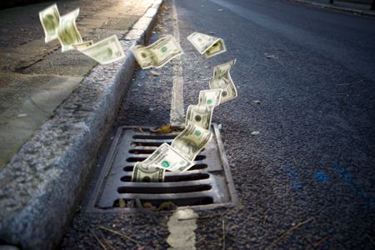Billion-Dollar Wastewater Infrastructure Upgrades May Already Be Outdated


As the country grapples with woefully outdated wastewater and stormwater infrastructure, much of the work being done to confront the problem may become outdated before it’s even complete.
“Experts warn that the wastewater system upgrades planned by some cities are ‘already obsolete,’” per Planetizen. “The designs are based on decades-old rainfall estimates that do not reflect current — let alone future — climate risk.”
Wastewater and stormwater infrastructure in cities across the country are increasingly unable to handle the volume of water brought by storms, leading to “combined sewer overflows” that drive massive amounts of untreated sewage directly into waterbodies. These failings are violations of the U.S. EPA’s Clean Water Act, and result in these cities being required to upgrade their infrastructure to prevent the problems from repeating.
But as it often takes many years to execute such upgrades, some wastewater infrastructure projects will already be insufficient to handle increasing storm surge as they come online in the near future.
“In the decades since cities’ plans were first approved, storms in the Midwest have grown more frequent and intense,” according to Grist. “Total annual precipitation in the Great Lakes region has increased by 14 percent … and the amount of rainfall from the heaviest storms has grown by 35 percent.”
This dynamic is becoming even more urgent as a landmark infrastructure bill signed late last year is poised to allocate billions of dollars for improving the nation’s wastewater systems. As a solution to the growing climate risks, many cities are now considering implementing green infrastructure to reduce the amount of stormwater that inundates systems from the start.
“[Cleveland’s] Project Clean Lake includes $42 Million in green infrastructure investments,” per Grist. “Milwaukee, which completed its own ‘deep tunnel’ in 1993, now aims to eliminate sewer overflows entirely by 2035, capturing 50 million gallons of runoff with green infrastructure alone.”
Still, the costs of implementing such resilient infrastructure throughout the country, and the funding needed to maintain it, present significant challenges for wastewater systems throughout the U.S.
To read more about how cities around the country handle increased rainfall, visit Water Online’s Stormwater Management Solutions Center.
